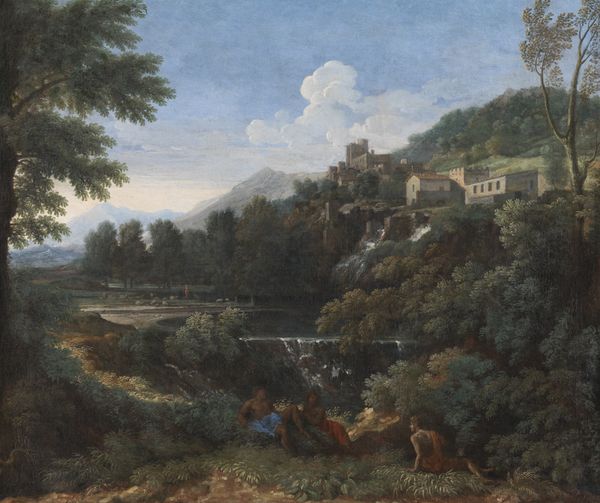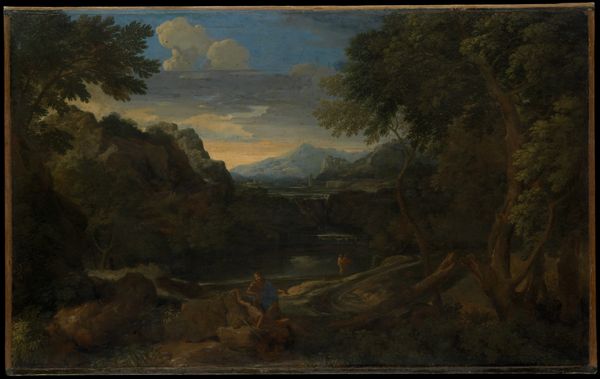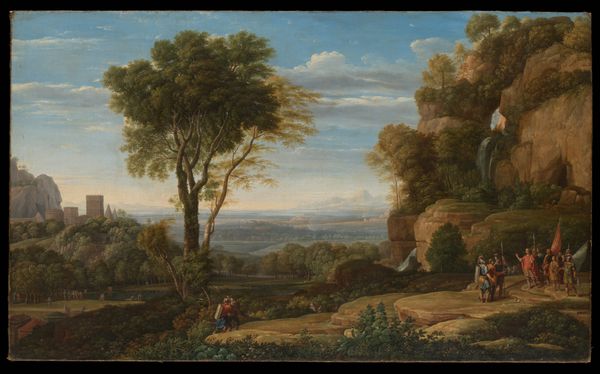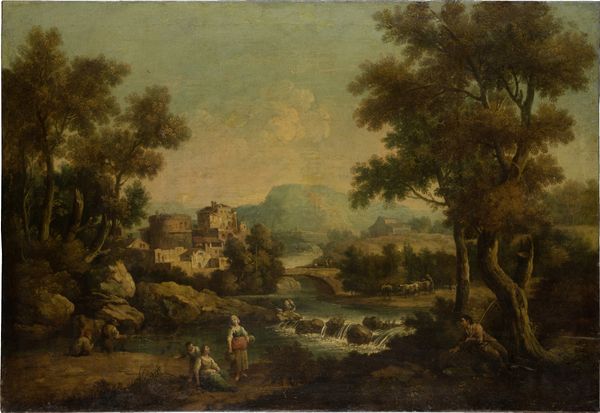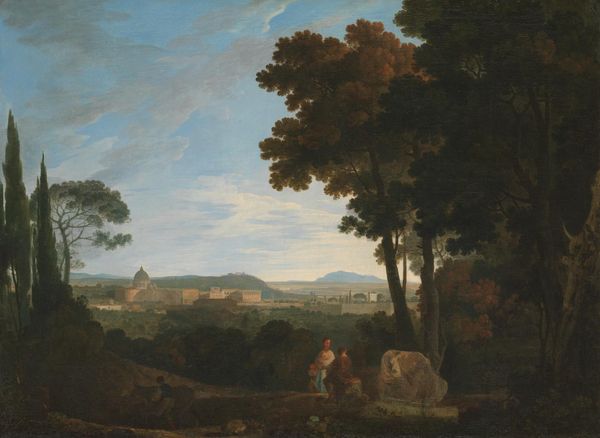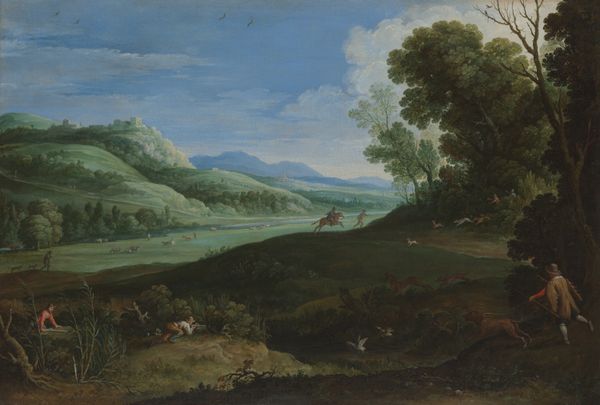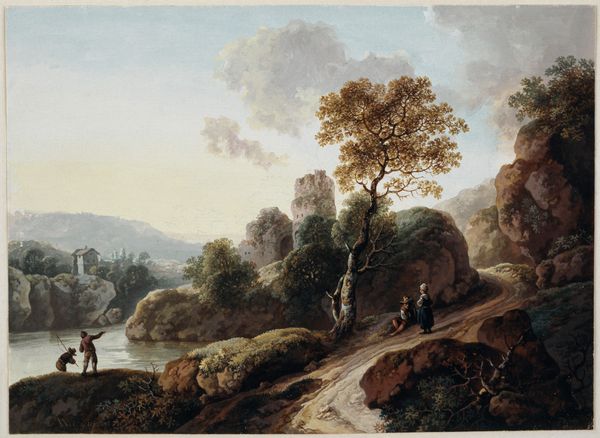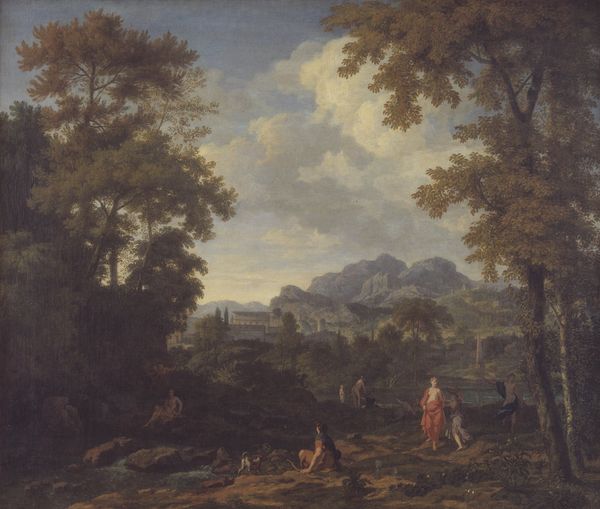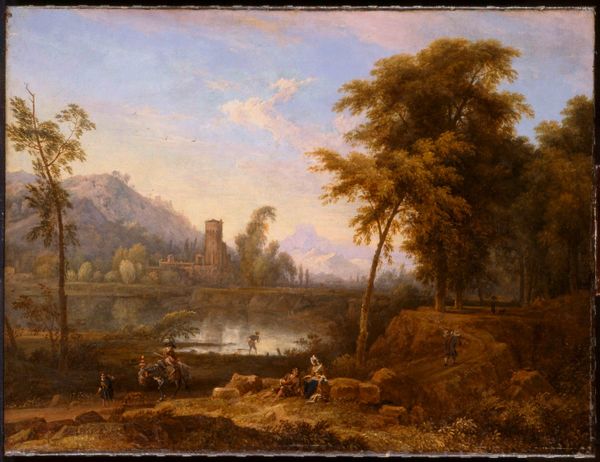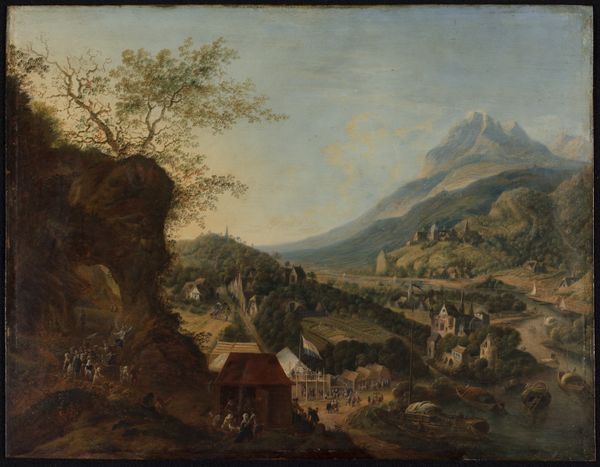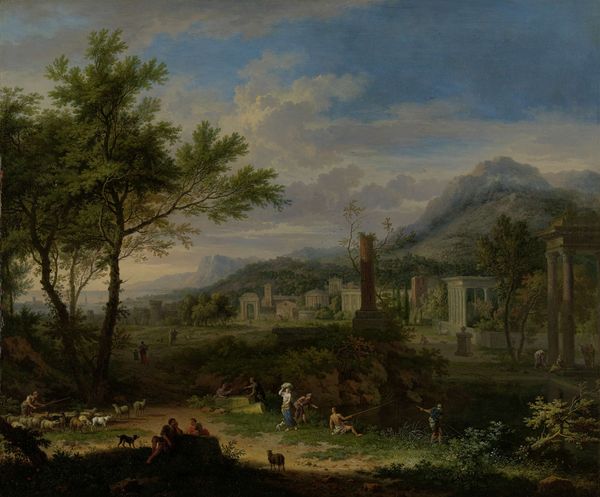
canvas
#
possibly oil pastel
#
oil painting
#
canvas
#
fluid art
#
earthy tone
#
underpainting
#
surrealism
#
painting painterly
#
watercolour illustration
#
surrealist
#
watercolor
Dimensions: 71.7 cm (height) x 85.4 cm (width) (Netto)
Editor: Here we have Gaspard Dughet's "Arcadian Landscape," believed to have been created sometime between 1628 and 1675. It's an oil on canvas. The landscape is lovely but also feels staged, somehow... I wonder, what kind of symbolic readings do you draw from this idyllic scene? Curator: It’s interesting you say 'staged.' Think of Arcadia itself - more of an idea than a real place, right? Dughet, like many artists of his time, uses landscape to evoke a Golden Age. Do you see how the figures are integrated, almost secondary to the natural world? They're less portraits and more staffage. What does that suggest? Editor: That human activity is subordinate to nature... a reminder of something lost perhaps? Like we’re visitors looking back on a happier time? Curator: Precisely. Consider the symbol of water, often linked to purification and reflection, or even time flowing. Then there’s the mountain – traditionally symbolizing spiritual aspiration, a place to get closer to divinity. Ask yourself: What’s being represented, not just seen? Editor: It’s as if each element—the figures, the water, even the distant architecture—are pieces of a puzzle meant to evoke a longing for simplicity and harmony. Curator: And think about the enduring power of those symbols! The desire for a perfect past… even today we are seeing similar representations in contemporary arts that borrow historical ideas. Editor: So it isn't just a pretty landscape, it is cultural memory and continuity using classical tropes. Thanks so much. Curator: Indeed. I find that by digging a little bit into how people represented such ideas back then makes me notice where it lives in culture now.
Comments
No comments
Be the first to comment and join the conversation on the ultimate creative platform.
